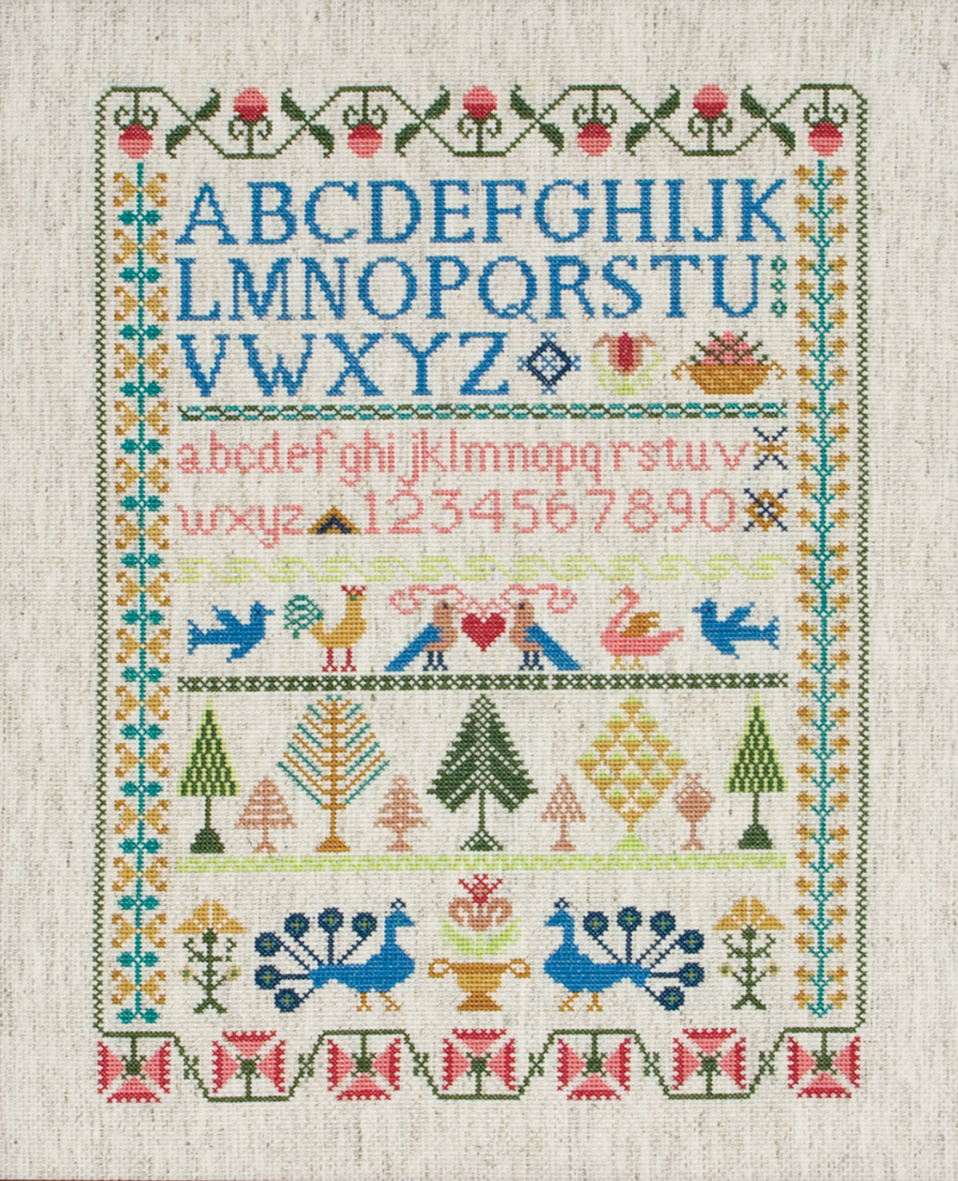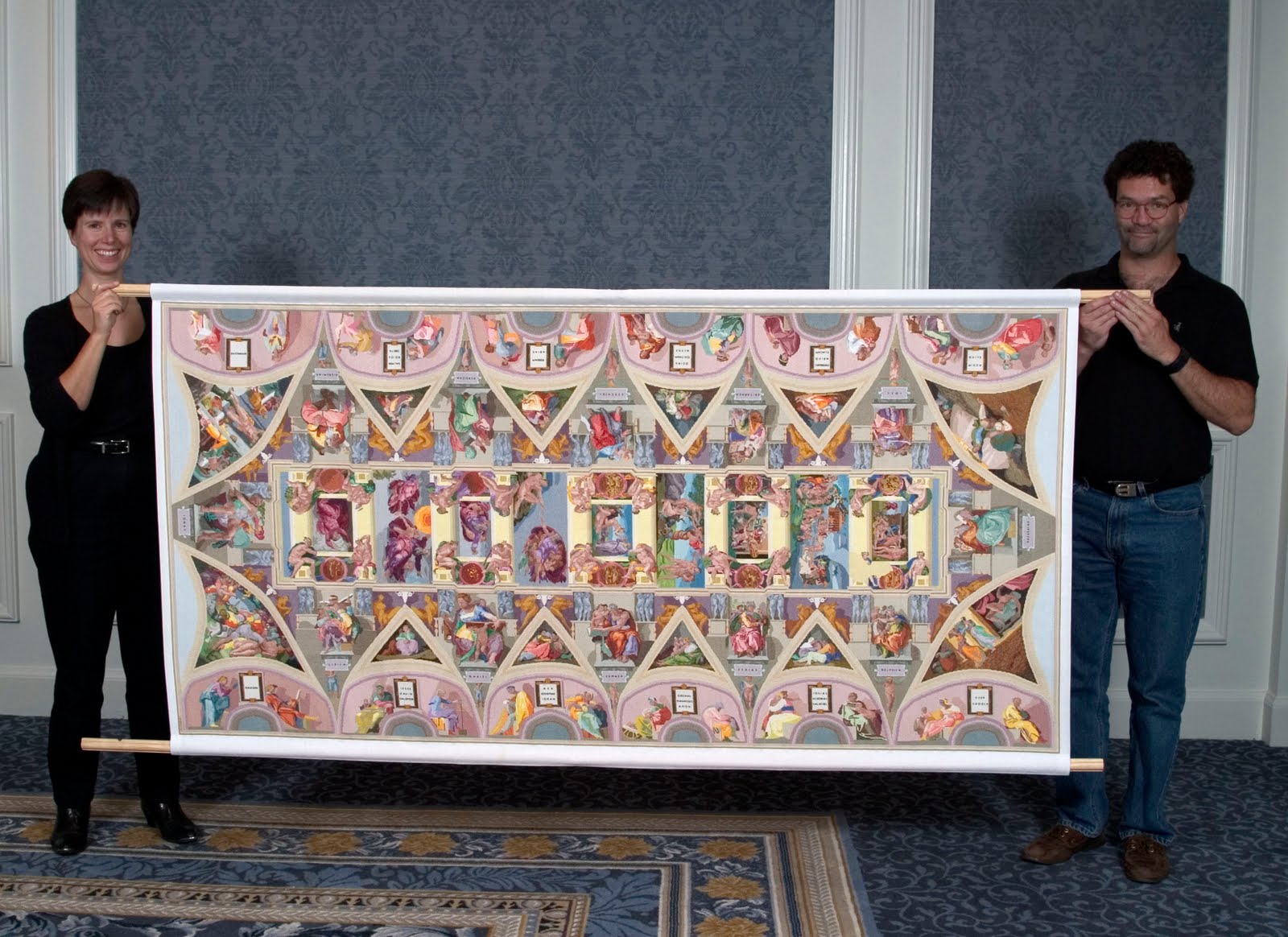Introduction to cross-stitch
Cross-stitch is a form of sewing and a popular form of counted-thread embroidery in which X-shaped stitches in a tiled, raster-like pattern are used to form a picture. The stitcher counts the threads on a piece of evenweave fabric (such as linen) in each direction so that the stitches are of uniform size and appearance. Cross-stitch is often executed on easily countable fabric called aida cloth whose weave creates a plainly visible grid of squares with holes for the needle at each corner.



History
Cross-stitch can be found all over the world since the middle ages.
Many folk museums show examples of clothing decorated with
cross-stitch, especially from continental Europe and Asia.
The cross-stitch sampler (seen here on the left) is called that because it was generally stitched by a young girl to learn how to stitch and to record alphabet and other patterns to be used in her household sewing. These samples of her stitching could be referred back to over the years. Often, motifs and initials were stitched on household items to identify their owner, or simply to decorate the otherwise-plain cloth.
Traditionally, cross-stitch was used to embellish items like household
linens, tablecloths, dishcloths, and doilies (only a small portion of
which would actually be embroidered, such as a border). Although there
are many cross-stitchers who still employ it in this fashion, it is
now increasingly popular to work the pattern on pieces of fabric and
hang them on the wall for decoration. Cross-stitch is also often used
to make greeting cards, pillow tops, or as inserts for box tops,
coasters and trivets.
Today, cotton floss is the most common embroidery thread. It is a
thread made of mercerized cotton, composed of six strands that are
only loosely twisted together and easily separable. While there are
other manufacturers, the two most-commonly used (and oldest) brands
are DMC and Anchor, both of which have been manufacturing embroidery
floss since the 1800s.
Recent trends in Cross-stitch
Where traditional cross stitch was used to embroider names, initials
and other basic patters or information, there is a growing trend to
create more intricate, tapestry-like illustrations in cross stitch.
Multicoloured, shaded, painting-like patterns as we know them today
are a fairly modern development, deriving from similar shaded patterns
of Berlin wool work of the mid-nineteenth century. Besides designs
created expressly for cross-stitch, there are software programs that
convert a photograph or a fine art image into a chart suitable for
stitching. One example of this is in the cross-stitched reproduction
of the Sistine Chapel charted and stitched by Joanna
Lopianowski-Roberts.
Another trend in cross-stitch online is for vulgar or tongue-in-cheek
phrases to be stitched and hung as wall ornaments.

